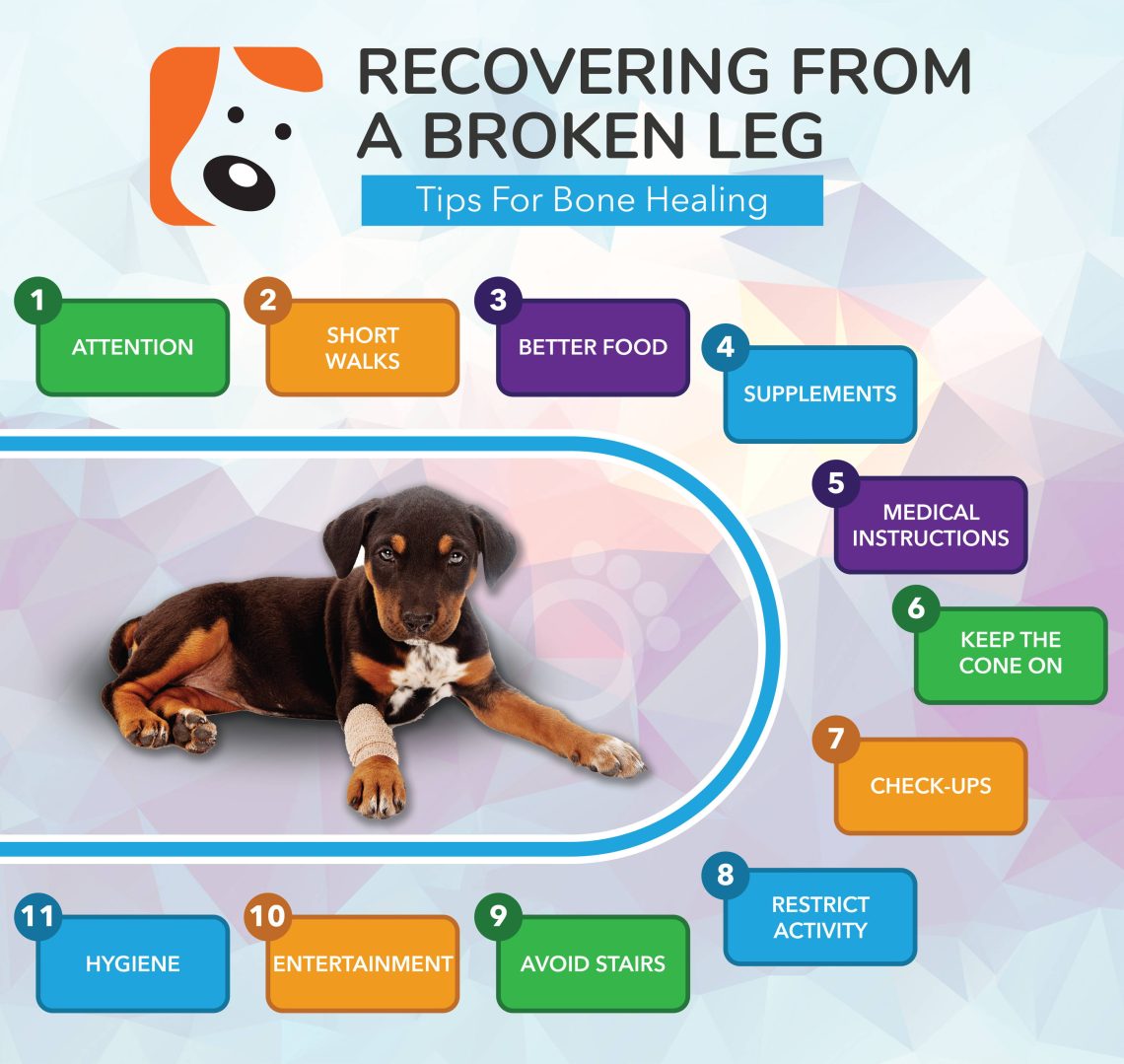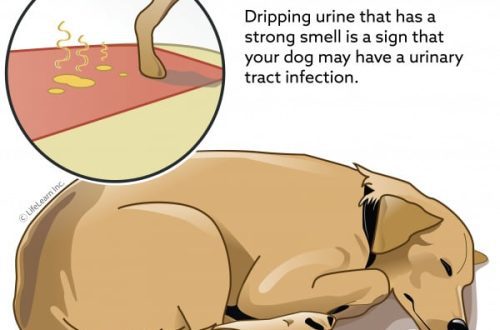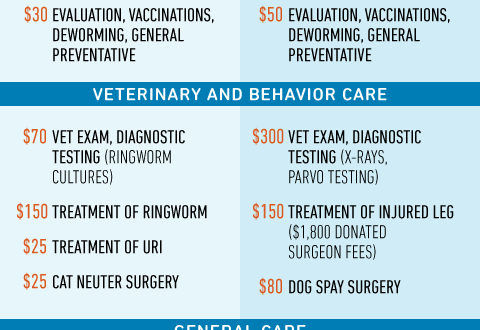
Caring for a dog with a broken leg
It’s sad to see your dog in pain. If you notice that she is limping, whining, squealing and showing her pain in every possible way, you will probably want to do everything to calm her down and ease her suffering right here and now. But if she has a broken leg, attempting to examine or treat her injury on her own can only make things worse. The veterinarian will be able to better determine the severity of the injury and determine if the broken leg needs treatment.
Contents
Symptoms of a broken paw in a dog
It is easy to understand that a dog has an injured paw if it is lame or refuses to walk at all. However, these signs do not necessarily indicate a fracture. According to VCA Hospitals, other signs that your dog’s leg may be broken are severe pain, swelling at the fracture site, and an unnatural foot position. If your dog tries to walk, he will try not to step on the broken paw – instead, he will lift it off the ground. If you suspect your pet may have a broken leg or other serious injury, it’s best to take them to the veterinarian immediately rather than trying to take action on your own.
How to transport an injured dog
Transporting a pet to the veterinarian can be a daunting task. If not done correctly, you can aggravate the injury or cause additional pain to the animal. If your dog is small, carefully move him into the car, supporting his head and hips. If the dog is a larger breed and can walk on its healthy legs, help it maintain its balance as it walks to the car, then gently help it get inside. If your big dog is unable to walk, you and a helper can lay him down on a blanket and carry him around like in a sling. Once the dog is in the car, put him on the healthy side. When you get to the veterinary clinic, immediately inform the staff that you have an injured dog in the car, and they will help you bring it inside.
Remember that an injured dog may be fearful or react aggressively to pain. Because of this, she may behave differently than usual, such as snapping at you or whining when you touch the injured area. Know that this is not serious – it just hurts her a lot. If she is particularly aggressive, you may need to ask for help to restrain her, or even temporarily muzzle her. Keep talking to her in a calm voice to reassure her that everything will be fine. As soon as she gets better, her behavior will most likely return to normal. Otherwise, if her aggressive behavior persists after recovery and rehabilitation, it is advisable to consult with a veterinarian to find out if there are any other health problems that require treatment.
Treating a Broken Paw in a Dog
Your veterinarian will want to take an x-ray of the injured paw to make sure it’s broken and determine the best treatment. Your dog may be given an NSAID – a non-steroidal anti-inflammatory drug – to relieve pain. Do not attempt this on your own, as many human over-the-counter medicines are not suitable for animals. When you make your veterinary appointment, you can ask what can be done to ease her pain before you arrive at the clinic. If the paw is indeed broken, your doctor will discuss with you the best treatment option: simply set the leg and put a cast or splint on it, or surgically repair the bones in the paw using pins or a plate. The best treatment option for a fracture depends on several factors, including the type and location of the fracture, and the dog’s age, which affects bone strength.
Preparing for possible injury
 There is not much that can be done as first aid for a dog with a broken leg, but you can prepare in advance for such an emergency:
There is not much that can be done as first aid for a dog with a broken leg, but you can prepare in advance for such an emergency:
- Write down the numbers of your regular veterinarian and XNUMX-hour emergency veterinary clinic so you can quickly find them after business hours.
- Keep a muzzle handy. Even the most affectionate dogs can sometimes bite when they are hurt.
- If your dog is too big to carry, or if you don’t have a vehicle, find out who you can ask for help with transportation.
If you suspect your pet has a broken leg, remain calm. If you panic, then he will also become worried and afraid – in addition to the fact that he is in pain. The sooner the injury is examined by a veterinarian, the better your dog’s chances of recovery will be.
Caring for your dog in recovery
After the veterinarian examines your dog and determines if the paw is indeed broken, they will instruct you on how to care for the dog to help it get better. Most likely, he will prescribe a painkiller and explain how to use it correctly. He will also instruct you on how to prevent your dog from aggravating the injury by walking. Be sure to follow all of these guidelines to help your pet recover as quickly as possible. If you need to leave your dog at home for a long time (for example, if you have to leave for work), you should lock him in a cage or in a room small enough for him to be comfortable there, but so that he cannot get up and walk around. The veterinarian may recommend that she wear a veterinary collar to prevent her from biting the cast or stitches after surgery.
She will need your help getting outside to use the bathroom, so you may need to carry her around to do her chores. Her physical activity at this time will decrease, so in the process of recovery she may gain excess weight. Your veterinarian can recommend a specialized food for dogs recovering from an injury that is best suited to her temporarily sedentary lifestyle. The doctor may also recommend less food to prevent the extra weight from putting even more pressure on the injured paw. Of course, you will want to give your pet a lot of treats while she is in pain, but remember – for some time she will not be able to burn these extra calories as before. It can also negate the results of all your previous workouts if you give her a reward for nothing, so try to treat her only when she is behaving well, for example, doing her own thing.
Later, as your dog gets better and better, the cast and stitches will be removed. However, make sure that your dog returns to normal life gradually. Follow your veterinarian’s instructions for walking and playing. You don’t want your paw to get hurt again, do you? Over time, you will begin to notice that your dog feels like he used to again, as his mood will change. When your doctor allows, you can slowly resume exercising to burn off any excess weight she may have gained during her forced inactivity.
A broken paw is no fun at all, and it can be hard for you to watch your pet suffer. Just follow your veterinarian’s advice and continue to surround your dog with constant love, and you’ll both get through this ordeal and become even closer to each other.





